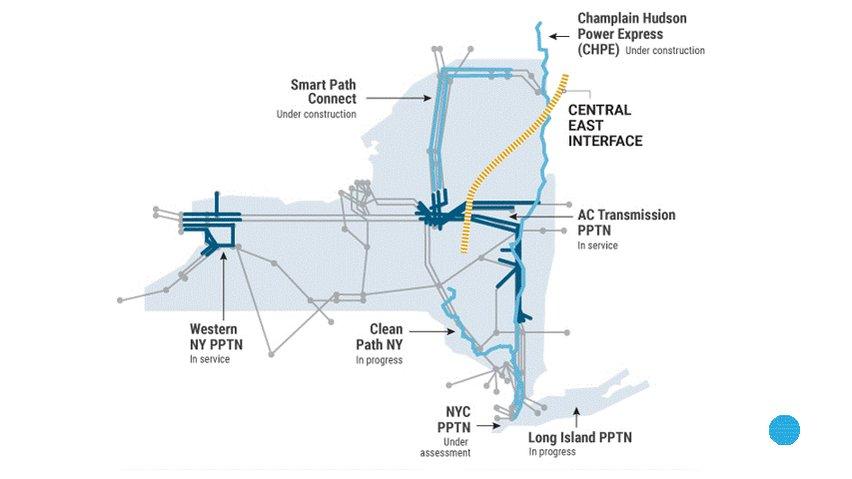New Yorkers have made their voices heard: the urgency of advancing Clean Path NY has never been clearer. As the city and state grapple with pressing climate challenges and the need for sustainable energy solutions, public opinion is decisively in favor of prioritizing this transformative clean energy transmission project. This op-ed explores why Clean Path NY stands at the forefront of New York’s commitment to a greener future and how it aligns with the broader goals of environmental resilience and economic growth.
New Yorkers Demand Swift Action on Clean Path NY to Combat Climate Crisis
As climate concerns intensify across New York State, residents are making their voices heard, urging policymakers to fast-track the Clean Path NY initiative. This ambitious project promises to deliver hundreds of megawatts of clean, renewable energy, positioning New York as a leader in environmental innovation and sustainable power. Community advocates emphasize that the stakes have never been higher, citing recent climate disasters that underscore the urgent need for resilient and eco-friendly infrastructure.
Key demands from New Yorkers include:
- Accelerated permitting processes to avoid delays
- Transparent communication between authorities and the public
- Investment in local job creation tied to green energy projects
- Commitment to environmental justice, ensuring marginalized communities benefit
| Benefit | Projected Impact |
|---|---|
| Carbon Emission Reduction | 50% by 2030 |
| Clean Energy Delivery | 1,000 MW+ |
| Green Jobs Created | 10,000+ |
Analyzing the Economic and Environmental Benefits of an Expanded Renewable Grid
The expansion of New York’s renewable energy grid promises substantial economic advantages, including job creation and long-term energy cost reductions. Investing in infrastructure such as Clean Path NY attracts private sector investment, fostering innovation and maintaining the state’s leadership in clean technology. Key industries such as manufacturing, construction, and engineering stand to benefit, supporting thousands of local jobs while stimulating regional economies.
Beyond economic gains, the environmental benefits are profound and immediate. By reducing reliance on fossil fuels, an expanded renewable grid cuts carbon emissions drastically, contributing to New York’s ambitious climate goals. Cleaner air leads to better public health outcomes, reducing medical expenses related to pollution-induced illnesses. The table below highlights the projected environmental impact compared to current energy sources:
| Energy Source | Carbon Emissions (tons/year) | Projected Cost Savings (millions $) |
|---|---|---|
| Fossil Fuels | 1,200,000 | — |
| Renewable Grid Expansion | 350,000 | 150+ |
- Job Growth: Up to 5,000 new clean energy roles by 2030
- Emission Reductions: Over 70% decrease in greenhouse gases
- Energy Independence: Reduced volatility in energy prices
Addressing Infrastructure Challenges to Ensure Reliable and Equitable Energy Access
To secure reliable energy access across New York, addressing the current infrastructure challenges is non-negotiable. Decades-old transmission lines and aging substations have struggled to keep pace with soaring demand and the state’s ambitious climate goals. Upgrading grid components with modern technology not only improves resilience against extreme weather events but also facilitates the integration of renewable energy sources, reducing reliance on fossil fuels. Without these critical upgrades, millions remain vulnerable to blackouts and energy insecurity, disproportionately impacting low-income and marginalized communities.
Key priorities to overcome these hurdles include:
- Investing in advanced grid modernization projects aligned with Clean Path NY’s vision
- Enhancing energy storage capacity to balance intermittent renewables
- Strengthening inter-regional transmission to enable equitable energy distribution
- Implementing smart grid technologies that empower consumer control and efficiency
| Challenge | Potential Impact | Strategic Focus |
|---|---|---|
| Outdated Transmission Lines | Frequent outages, energy losses | Infrastructure upgrades under Clean Path NY |
| Limited Energy Storage | Inability to balance renewable supply | Deploying large-scale battery systems |
| Unequal Grid Access | Energy poverty in vulnerable communities | Expanding transmission to underserved regions |
Policy Recommendations for Accelerating Clean Path NY Implementation and Community Support
To truly fast-track the implementation of Clean Path NY, state leaders must prioritize regulatory flexibility and enhanced funding mechanisms. Streamlining permitting processes will eliminate bureaucratic delays that threaten critical construction timelines. Additionally, increasing state investment through green bonds and public-private partnerships can unlock the financial resources necessary for large-scale clean energy projects. Policy reforms should also emphasize equitable workforce development programs, ensuring local communities benefit through direct job creation and skills training aligned with the emerging clean energy economy.
Building sustained community support requires transparent communication and inclusive decision-making frameworks. Mandating regular public impact reporting and establishing community advisory boards can empower residents—particularly those in historically underserved neighborhoods—to have a meaningful voice in project execution. Furthermore, integrating equitable benefit-sharing models, such as community solar credits and local health improvement funds, will foster trust and demonstrate that Clean Path NY is not just an infrastructure project, but a catalyst for justice and economic opportunity.
The Conclusion
As New Yorkers continue to demand bold action on climate change, the call for Clean Path NY grows louder and more urgent. Prioritizing this critical infrastructure project not only aligns with the state’s clean energy goals but also promises substantial economic and environmental benefits for communities across the region. With the public’s clear mandate, policymakers now face a pivotal choice—to advance Clean Path NY swiftly or risk falling behind in the transition to a sustainable energy future. The message from New Yorkers is unequivocal: clean, reliable energy must be at the forefront of the state’s agenda.













